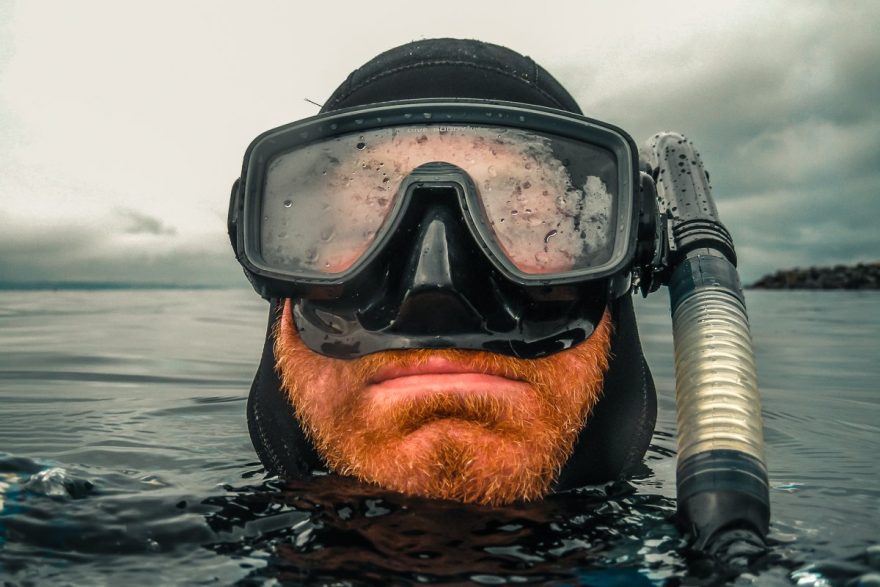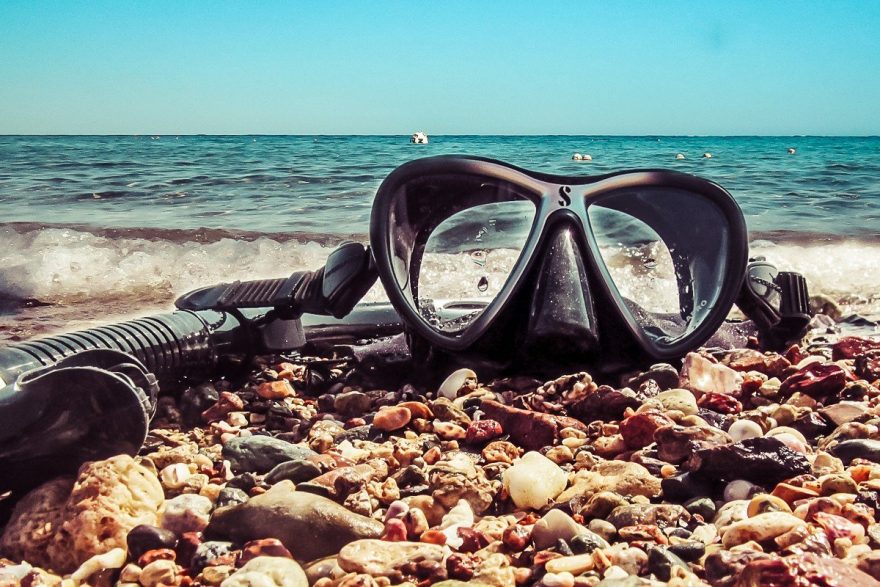No matter if you scuba dive or snorkel, you certainly wouldn’t want having a foggy or leaking mask.
A leaking mask can have many causes. The main reason though is a total mispurchase – the mask simply does not fit your face. But there might be other reasons for the mask to fog up.
Here you will find 4 tips which will help you to a crystal clear view in the water.
1. Buy the right mask for your face
Everyone has a different facial shape – the same goes for diving masks. Therefore, you should not just simply buy any mask online because it has good ratings. Same as for a backpack that fits you perfectly, you should also head to a specialist shop for diving equipment. In this case it is the dive shop / diving base of your trust. Let yourself be thoroughly advised and try out several models before buying one.
For a fitting, place the mask loosely on your face without putting the strap around your head. Breathe slightly through your nose and let go of the mask afterwards. If the mask still remains well-placed on your face, it fits. Carry out this test on some more masks till you have a handful from which you can then choose to your taste (color, a single glass or two separate ones, neoprene strap, etc.)
Also: Try not to buy a mask with an additional blow-off valve – these get quite porous after some use and add to potential leaking.
2. Tighten your mask strap correctly
Many divers tend to adjust the strap way too tight. This way the strap may compress the silicone skirt too much and make the mask leaking. In addition, it will be more difficult to blow out your mask if you have some water leaking. Even worse: A mask under low pressure can get you ending up with some eye barotrauma – keep in mind that the water pressure also puts some force on the mask.
3. Check whether there is no foreign object between your face and the mask
As tight as the silicone seal of the mask may be, if something is between mask and your skin, you will have leakage. When placing the mask, make sure that the silicone skirt does not go over your hood and that there is no hair between the skin and the silicone. Especially divers with longer hair know this problem. Of course, the seal should also lie smoothly on the skin and should not be buckled. If you are in doubt, just ask your buddy if everything is fitting properly.
If you happen to not only have hair on your head but also on your face (like me) you might have to face another problem: Lots of guys with beards will find it hard to get the mask tight with more than a two-day-old beard. Silicone grease may be the remedy here, but after having to blow out your mask just once, all of it may be gone. (Also: If you really want to use something like this, do not use petroleum-based products like Vaseline. The chemicals in these products will break down the silicone skirt and will shorten the life of your mask.) Sometimes trimming the beard at the upper lip is the only way.

Image by Ian Hamilton
4. Foggy mask?
Every scuba diver’s mask can fog up, especially when it was laying in the sun for example, and you go with it into cold water, it happens very quickly. This is especially true for new masks. They still have a thin layer of release agent containing silicone oil on the glasses which is used in the manufacturing process of the mask body. The three most common solutions for removing this film are:
- Fill the mask with CocaCola overnight (Yes, Pepsi is also ok)
- Rub toothpaste on the masks glasses and let it rest for a while
- Burn the film with a lighter
Since the release agent is normally chemically almost non-attackable, it must be removed mechanically. It has the property of adhering perfectly to surfaces and thereby forming an extremely thin film. So if only a small remainder of it is left on the masks glasses, it creeps all over the entire surface. The mask fogs again.
So… Cola is not an option here. We want to handle things the right way.
Playing with the lighter certainly works, but you may ending up damaging your mask.
Best solution? Common toothpaste. The glasses have to be thoroughly rubbed with it. The mask should then be left to dry before you can rub the toothpaste off with a soft cloth. Get an old toothbrush to get the remaining toothpaste off the corners. The mask can then be rinsed with water or soap. If you want to be on the safe side, repeat the process 1-2 times.
Nevertheless, you should also prevent fogging before each dive. The easiest way is to spit in the mask just before the dive and rub the spit carefully on both glasses and rinse with cold water afterwards. Alternatively, you can also use liquid soap or something similar instead. Do not let your mask lie in the sun right before the dive, as the glass will cool off during the dive and water will condense on the inner side.

Image by Ulrike Bohr


3 comments
Thanks for these tips Mario I hate a foggy and leaking mask when we snorkel – usually it’s from the crappy masks they give you from the tours – so we’ve since purchased our own gear and travel with it – has made such the difference knowing that other people haven’t put it through wear and tear
Interesting post with valuable tips on mask while going through an underwater adventure, I liked lot.
Good tips on masks!